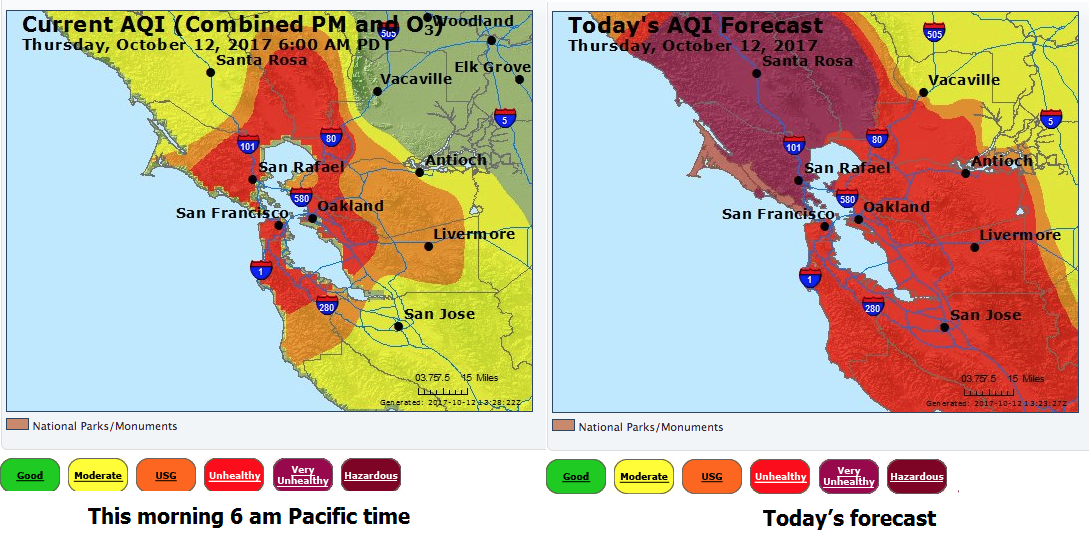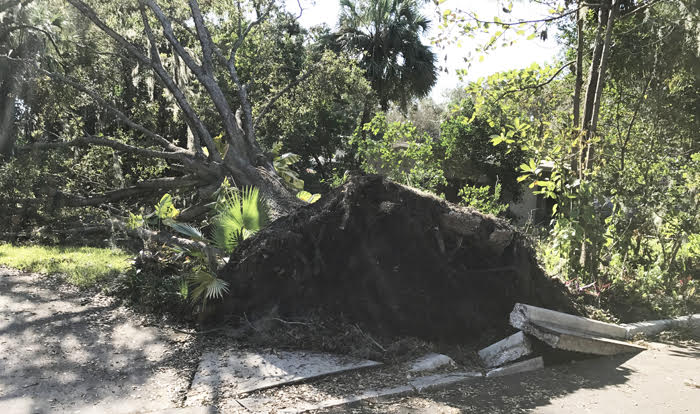
Water | Resources
Need Recommendation for Unscented Soap for Hand Washables
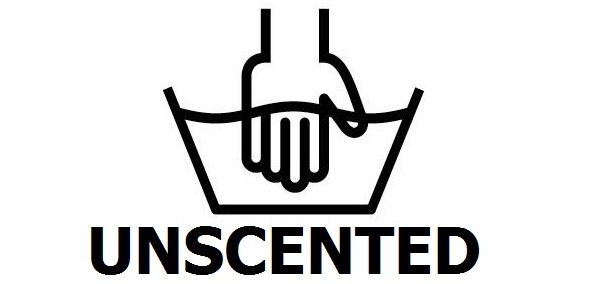
Question from Carol
Hi Debra,
What unscented soaps or detergents have canaries found tolerable to wash hosiery and hand washable delicates? I used to use the old formula ivory dish soap, but that has not been available for ages.
Debra’s Answer
Readers, what unscented soap for hand washables do you use and recommend?
How Do I Sanitize Rooms on Vacation?

Question from Zigzag
Hi Debra,
I just came back from a Airbnb/HomeAway/etc. mini-vacation. The place was heavenly and perfect in so many ways, but thoughts of germs, toxins, true cleanliness, etc. entered my head, not to be forgotten. What do you recommend to ensure adequate cleanliness but not over the top, vacation-spoiling obsessive?
Debra’s Answer
What about one of those products that use ultraviolet light in them.
Here are several different types:
Readers, any suggestions?
Biodegradable Plastic Bags

Question from Jim
My Most Dear Debra:
As I didn’t find it on your site nor the www, is the foul out-gassing smell of biodegradable as well as compostable plastic bags toxic?
I do thank you most kindly, Debra.
Debra’s Answer
Biodegradable plastics are the same petrochemical plastics engineered to break down more quickly.
So yes they could smell just as bad and be just as toxic.
Here’s an article that explains about bioplastics and biodegradable plastics.
Widespread Air Pollution From California “North Bay Firestorm” — And What I’m Doing to Protect My Health
On Sunday evening I went out to dinner with my family to a local restaurant. It was a pleasant evening and we sat on benches out in front of the restaurant quite comfortably while we waited for our table. When we walked out the door of the restaurant after dinner, there were gusts of wind so strong that I said, “A storm is coming!”
And then I remembered I was in California. In Florida, where I had been living for 15 years, this wind would mean I should go inside somewhere because very soon there would be a downpour with thunder and lightning. But this was California. There were few thunderstorms. But on Sunday night I was right. The winds created a firestorm.
Because of the winds, the fire spread quickly over a large area, with flying embers instantly igniting a dry landscape. Last I heard there are now 21 fires burning. There haven’t been enough firefighters. But firefighters and military from all over the country are being sent. Yesterday the firefighters numbered 8000. And still no containment.
While the winds carried the fires in the direction opposite from where I am living, the smoke from these fires has been terrible. I am only about 15 miles from the largest fires.
Outdoor Air Quality Warnings
Depending on where you live, you might not ever think about the quality of air outdoors. On my website, I focus on the quality of air inside homes and sources of unhealthy pollutants, but indoor air quality actually begins with outdoor air quality. I learned this many years ago when I and a friend created a nontoxic home for him in an area near downtown Oakland, California that had highly polluted outdoor air. Even though everything inside was perfectly nontoxic, he couldn’t live in the house because of the quality of the outdoor air. So I always start with the outdoor air quality when I am choosing a place to live.
But outdoor air quality is an issue in many places, so much so that our government has created the Air Quality Index to inform the public when outdoor air pollution reaches a level that can be harmful to health.
Local air quality affects how you live, how you breathe, and your health. Just like the weather, it can change from day to day and even hour to hour. So the US Environmental Protection Agency (EPA) and your local air quality management agency has made information on air quality as easy to understand as a weather report. And you’ll often see or hear this information as part of a weather report.
Air Quality Index
The Press Democrat newspaper reported “a monitor in Napa recorded an air quality index of 442 Monday morning, with a high of 292 in San Rafael.” By later in the day these areas measures 159 for Napa and 164 for San Rafael, showing the smoke moving away from the source fire and into the surrounding area.
On Monday at our house, which is about 15 miles from the fire, the sky was thick with smoke all day. Charred leaves were falling from the sky and ash was blowing continuously like snow. We stayed indoors as instructed but still the air smelled like smoke.
Larry and I went to sleep early but woke up around midnight. Larry was wheezing so badly that every exhale sounded like kittens mewing. I felt like I soon was not going to be able to breathe. With my interest in indoor air quality I always felt like even if the indoor air pollution was bad, I could always go outside and breathe. But now there was no clean air outside to breathe.
We got out of bed and drove for a half hour to Bodega, which is right on the Pacific Ocean. We opened all the windows of the car and breathed deeply the clean air. Fortunately, we were able to find a room at a lodge and could sleep through the night. But by morning the smoke had reached the ocean too.
This was now Tueday morning. We checked the television and found that the entire San Francisco Bay Area had the UNHEALTHY air index. We would have to drive for hours to get into clean air.
But our area is not the only place in California with smoke from wildfires. Cal Fire tracks all the fires in the state of California. Here’s the current map:

The Chemical Composition of Smoke
The exact composition of any sample of smoke depends on the material that is being burned. But in general, smoke—whether it comes from a cigarette or a house fire—is made up of particles and gasses. The type and amount of particles and gasses in smoke varies depending on what is burning, how much oxygen is available, and the burn temperature.
Particles are irritating, but gasses can be toxic.
I mention this because I am seeing people walking around wearing particle masks, which protect their lungs from particles, but not gasses.
CHEMICAL COMPOSITION OF WOOD SMOKE
| carbon monoxide | methane |
| VOCs* (C2-C7) | aldehydes |
| substituted furans | benzene |
| alkyl benzenes | acetic acid |
| formic acid | nitrogen oxides |
| sulfur dioxide | methyl chloride |
| napthalene | substituted napthalenes |
| oxygenated monoaromatics | total particle mass |
| particulate organic carbon | oxygenated PAHs |
| Individual PAHs | chlorinated dioxins |
| normal alkanes (C24-C30) | sodium |
| magnesium | aluminum |
| silicon | sulfur |
| chlorine | potassium |
| calcium | titanium |
| vanadium | chromium |
| manganese | iron |
| nickel | copper |
| zinc | bromine |
| lead |
The Health Effects of Breathing Smoke
According to the New York State Department of Health
Exposure to high levels of smoke should be avoided. Individuals are advised to limit their physical exertion if exposure to high levels of smoke cannot be avoided. Individuals with cardiovascular or respiratory conditions (e.g., asthma), fetuses, infants, young children, and the elderly may be more vulnerable to the health effects of smoke exposure.
Inhaling smoke for a short time can cause immediate (acute) effects. Smoke is irritating to the eyes, nose, and throat, and its odor may be nauseating. Studies have shown that some people exposed to heavy smoke have temporary changes in lung function, which makes breathing more difficult. Two of the major agents in smoke that can cause health effects are carbon monoxide gas and very small particles (fine particles, or PM2.5 ). These particles are two and one half (2.5) microns or less in size (25,400 microns equal an inch) and individual particles are too small to be seen with the naked eye.
Inhaling carbon monoxide decreases the body’s oxygen supply. This can cause headaches, reduce alertness, and aggravate a heart condition known as angina. Fine particles are able to travel deeply into the respiratory tract, reaching the lungs. Inhaling fine particles can cause a variety of health effects, including respiratory irritation and shortness of breath, and can worsen medical conditions such as asthma and heart disease. During increased physical exertion, cardiovascular effects can be worsened by exposure to carbon monoxide and particulate matter. Once exposure stops, symptoms from inhaling carbon monoxide or fine particles generally diminish, but may last for a couple of days.
Read also AIR NOW: How Smoke from Fires Can Affect Your Health
How to Protect Yourself From Smoke if You Live Near a Fire
On the first day of the fires, TV news shows told us tp stay indoors to avoid the smoke outdoors. But this doesn’t seem like enough to me.
Here are more things you can do:
1. If you can, drive somewhere else outside of the smoky area.
2. Get a face mask that filters both particles and gasses. Read this about choosing the proper face mask and how to use it correctly.
3. Run your HVAC system to filter air from outside. Recirculating air in your home for too long can reduce oxygen levels. Keep a supply of HVAC filters on hand so you can change them as needed. Check the filter daily to see if it needs to be changed while the outdoor air is smoky.
4. Use an air filter that filters out both particles and gasses.
How to Relieve Symptoms Caused by Smoke Inhalation
First, just drink a lot of water. I have a bottle of water with me and I’m sipping it all day. Smoke will really dry your body out, and your body needs even more liquid at this time.
A major problem from smoke inhalation is all the particles in the air clog the cilia, little “oars” in the respiratory tract, sinuses and lungs that move foreign materials through the system.
To clear the cilia, drink hot liquids. Hot liquids stimulate the cilia to move and this in turn can help get the mucus moving so you can swallow it or cough it up. This removes the mucus containing the contaminants from your respiratory system, where it can do further damage.
If you really are having trouble breathing, go to your nearest emergency medical facility. There they can give you oxygen, which is the standard treatment for smoke inhalation.
Larry and I did drive away from the smokey area when it became clear we were starting to have breathing difficulties. But then when the smoke came to where we were, we drove back to Sebastopol and got my air filter out of the storage locker and brought it home and set it up. And we both were able to breathe comfortably indoors and haven’t had any problems since.
PRODUCTS THAT CAN HELP REDUCE SMOKE INHALATION
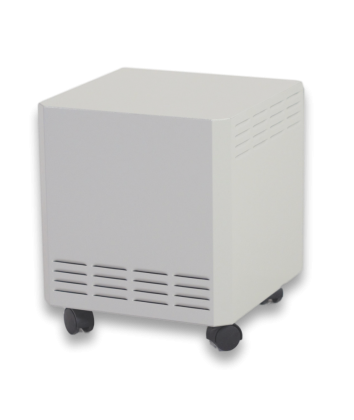 |
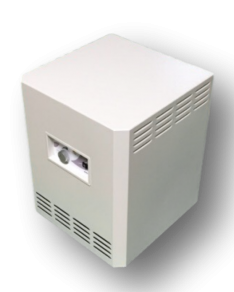 |
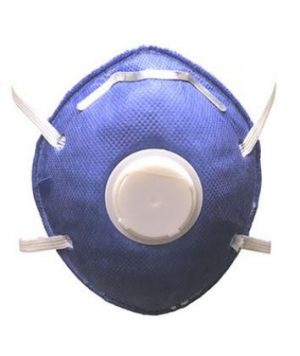 |
| EnviroKlenz Mobile Air System |
EnviroKlenz Mobile Unit UV Model |
EnviroKlenz Breathing Mask |
| HEPA filter for particles plus patenting hospital-grade technology that removes and neutralizes VOCs, bad odors, and fragrances. | EnviroKlenz Mobile Air System plus a UV light to inhibit the growth of captured bacteria, molds, and viruses | Removes both particles and toxic gasses that are present in smoke |
| More.. | More.. | More.. |
The Importance of Place for Health
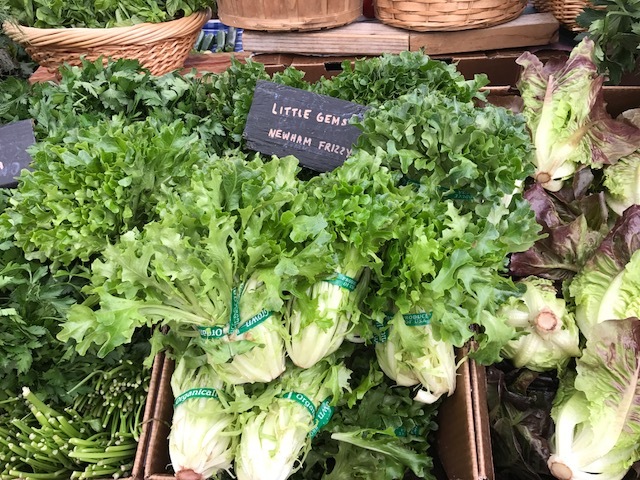
I had this lettuce for lunch from the Sebastopol farmers market.
I’m so happy to finally be here in California after two days of packing the truck, seven days of driving, and two days of unpacking everything I own into a storage unit. But I’m here, the sale of my house has closed, and I’m ready to start a new life.
I still have much to do to set up my office and be able to get back on my regular schedule. I’m having a lot of connection problems with email and Internet access so if you have written to me and haven’t heard back from me or your email was returned that’s why. But I expect to be able to set up my usual desktop computer this week and start going through all the emails.
Please forgive my run on sentences and grammar errors today. I am dictating this into my iPhone and having to edit it on the small screen which is very difficult.
I have had some limited access to emails and received some questions so I want to tell you more about what’s going on in my life and where I am right now in California and why. Because I’ve really found that there is an enormous difference between where I was living in Florida and where I am living now and how I’m feeling and my overall happiness and health.
Larry and I have undertaken an enormous task of re-organizing our lives around ideas, abilities, relationships, experiences, adventures, and other such soul-satisfying interests rather than the pursuit of material goods. And so we have been simplifying our lives and reducing our possessions and now are in California continuing that process with things that Larry has accumulated over the years. With the goal being more freedom and lightness to make new choices about our life together.
I’ve been asked WHERE we are now living in California and WHY we moved there and WHY we left Florida. So I thought I would answer these questions today because I’m not yet set up to send you the usual newsletter.
First why we left Florida. Florida is a very difficult place for me to live. We moved there in the first place because there were things we wanted to do there and didn’t really realize how difficult it would be to live in that environment. It is extremely hot and humid most of the year, the winters are beautiful, and my life basically consisted of going from my air conditioned house to my air-conditioned car to an air-conditioned building. I could spend very little time outdoors and what time I did spend outdoors was mostly spent battling the many insects that were trying to bite me. And also trying to not be sunburned and collapsing from sunstroke. It was just a constant battle with the environment. When Larry and I got back together we both decided that we no longer wanted to live in Florida and he “brought me home” to California.
We are living with his family right now in Sebastopol California. It’s a lovely little town in Sonoma County about two hours north of San Francisco. It’s right on the southern edge of the wine country of Sonoma and Napa counties.
It’s about a half hour drive to the beach, the Pacific ocean, and we get that clean air as if we were right on the beach itself. The first morning we were here we looked out the window and the sky was gray. We were wondering if it was going to rain but there was no rain in the forecast. We were wondering why the sky was gray and then we remembered that fog comes in from the ocean on summer mornings and late afternoons and that the grey sky we were seeing was the fog. I have lived with his fog my whole life except for the 15 years I’ve just been in Florida and yet I had forgotten it until I actually got here. We are sleeping with the windows open and feel that gentle fog comes in in the morning and it’s so wonderful to wake up to that coolness against the warm summer mid days. After 15 years of close windows and air conditioning I am loving breathing this air that is so clean and alive with windows open and going for walks.
The water we have here at Larry’s family home is from a well and it is so delicious and so clean. It isn’t filtered tapwater it’s actually water from the earth. And I love this water I love to drink and I love to bathe in it it just is again alive.
 But the best part for me so far was this morning we went to the farmers market and it was an actual market with actual farmers. Everybody there had grown the food or prepared for the local food with their own hands or had tended the sheep and made something from the wool. At one stand I found celery root with the actual celery attached. You never see it this way in the supermarket but I could see and experience the whole plant. Another stand had about 10 varieties of apples that they grew on their farm and next week I’m going to go back and buy them all so that I could taste the different varieties next to each other and see which one I like best. The food was so beautiful and so vibrant and so abundant and this is the food we should be eating.
But the best part for me so far was this morning we went to the farmers market and it was an actual market with actual farmers. Everybody there had grown the food or prepared for the local food with their own hands or had tended the sheep and made something from the wool. At one stand I found celery root with the actual celery attached. You never see it this way in the supermarket but I could see and experience the whole plant. Another stand had about 10 varieties of apples that they grew on their farm and next week I’m going to go back and buy them all so that I could taste the different varieties next to each other and see which one I like best. The food was so beautiful and so vibrant and so abundant and this is the food we should be eating.
This is a farming community that we live in but it’s not an Agro business community it’s a community of small family farms many of them organic. I pointed out to Larry a sign that said “canning supplies – Apple press rentals.” And that for me summed up the town because people are growing apples are buying them from local farms and everybody’s making apple cider at home. And they all know how to make it along with twenty other things to do from the surplus of apples that are just falling off the trees here.
Downtown there are a number of shops of the usual times selling clothing and housewares and things like that but they’re all independently on and many of the products are made locally. And there are feed stores right now in town selling animal feed that and other things having to do with farm supplies. It’s so wonderful because it’s about Life here. It’s about the growing of things on the making of things rather than the buying of industrial consumer goods.
It’s also a community. As you drive down the street you see signs inviting you to the polenta and beef stew dinner or the lobster fest or the pancake breakfast. And all these are arranged so that neighbors can meet each other and get to know each other.
I had none of these things in Florida and my heart just aches for them. Because I have had all this before living in California. When I lived in the San Geronimo Valley everyone who lived in the whole valley had Thanksgiving dinner together in the community center, all potluck turkeys with all the sides.
I actually burst into tears at the farmers market today because this is so how we should be living. And Larry knew that and brought me here and didn’t let us stay in that environment of Florida. Here we are much closer to nature and much happier for it.
When we were in Florida we had difficulty sleeping and so of course we would look for natural things that we could take that would help asleep. But here we have no problem sleeping at all and part of that is because were outside doing things and walking around and when it’s time to sleep we’re ready to sleep. Larry says, “All we needed was a dose of ‘natural environment’.” And this makes me wonder how many things we think of as illnesses are simply lack of being connected to the earth and life and creating life. I’ve visited a woman who bought my needlepoint chair and she and her husband are out building cabins for their bed-and-breakfast restoring old buildings bringing pieces from different places and putting them together. That’s work. And at the end of the day you’re happy and tired and you’ve eaten good food from the farms and you sleep and your body feels good. It’s not about Healthcare it’s not about going to the doctor or a remedy. It’s about actually living the life that nature designed our bodies for.
This morning I ate something called a crane melon for breakfast. Local organically grown it was delicious it had its own wonderful flavor kind of a cross between a cantaloupe and honeydew melon. It was grown on a local farm and will never be found in a supermarket.
So this is where we are and this is what we’re doing. And we’ll see what happens next!
Lessons from Irma
This large tree was blown over by Irma just one block from my house. The roots came up entirely and broke the sidewalk curb.
This past week I went through an experience with hurricane Irma that could be called a “disaster.” And I just want to tell you about it because I learned a few things.
We were not hit directly, but if you were watching Irma on TV you know that the storm was so big that the entire state of Florida was affected one way or another.
In Clearwater, where I live, there was no damage to houses and buildings from the wind, but there was a lot of tree damage. In our yard, the hurricane blew out many of the small branches from the trees so there is much more light coming through the canopy (not a bad thing) and some branches came down, but that was it. Others were not so fortunate. Just in my neighborhood several large trees came down entirely and if houses were under them, the house was damaged from the tree falling.
There was just A LOT of debris from overhead trees. The morning after we were all out raking up the twigs and spanish moss, which was all over everything. We all have piles of debris and branches at our curbside waiting for the city to pick it up. When we went out yesterday we passed a very large vacant lot that the city is using to dump all this tree waste. There is just piles and piles and piles of it, so much that ours is still not collected as I write this on day 6 after the hurricane.
We had power and water throughout the hurricane and after. The power flashed on and off all night during the hurricane, but we were able to watch all the hurricane news on TV until we fell asleep at about 5 am. When we woke up the TV was dead and there was no internet or phone. But that was all.
Some of our neighbors, however, are still waiting for their power and internet-tv-phone service to be turned back on. Many are staying in local hotels because the 90+ degree heat is unbearable without air conditioning.
Life as we knew it stopped with the hurricane. We didn’t drive around on Monday, but walked around our neighborhood carefully, watching for downed power lines. On Tuesday we ventured out in the car, but there were no traffic lights so we didn’t go far. The streets were deserted. All the stores were closed. One man with a BBQ business was cooking BBQ on the sidewalk.
Slowly this week, businesses are coming back. We can drive around now because the traffic lights are restored. But even as of yesterday some businesses were still down because they didn’t have power.
And frequently we see caravans of repair trucks driving from one destination to the next to restore power and communications services. It takes time.
And I’m sure it’s like this all over Florida, if not worse.
I wanted to tell you this because you may have watched TV and thought that the situation was far worse. I learned a long time ago that the “news” is sensational. They want readers or viewers or listeners so they can sell advertising. They present what is happening in a dramatic way.
Lesson 1: A Disaster Doesn’t Have to Be a Disaster
The main thing I want to say about natural disasters like this is that they don’t have to be a disaster. The word “disaster” means “opposite of the stars” or something that is out of harmony with life. In fact, hurricanes are not disasters in and of themselves. They perform a vital function of temperature regulation on the planet. They are moving heat from the equator up north where it dissipates. Hurricanes are part of the whole system of nature.
The out-of-harmony part has to do with humans living in a way that is not in harmony with the hurricanes. A hurricane is a disaster only if you are living in a mobile home that will be blown away for sure, or in a flood zone. But even in a flood zone humans can keep a hurricane from being a disaster. In South Florida, for example, they have established building codes so new construction is required to be hurricane-proof. On TV once I saw a man who owns a restaurant in the Caribbean simply lift the floorboard up and hang the chairs on pegs on the wall so the flood waters could come in and not cause damage. He knew there were hurricanes and planned for them. He expected them and figured out how how to live in harmony. Hurricanes were not disasters for him.
When I moved to Florida I knew there was a possibility of hurricanes. And so I purchased a house on the highest hill so I would be out of the storm surge area. The entire city of Clearwater would have to be under water before my house would flood. And it’s also three feet above street level. This was a wise choice for this area. As fun as it might be to live on the beach, the beach is the first area to flood in a hurricane.
I also have learned enough about hurricanes that I can now predict what they will do. I knew exactly what would happen with Irma. I knew we would not be hit directly and that she would be weaker by the time she got to us. So I didn’t panic or board up my windows.
If you live in an area like Florida, where there are predictable natural occurrences, learn something about them so you can control the outcome of what happens to you when they occur.
Lesson 2: Cell Phones Are Lifelines
When power and wired communication services go down, I found that my lifeline was my cellphone. The cellphone service stayed on all during and after the hurricane. While I don’t like the EMF exposure, I love having a cellphone. The industry needs to improve this product to make it safer. Because it really is a good product.
With my cellphone I was able to text my friends and neighbors. I was able to Skype my assistant in the Philippines so she could send the email telling my readers I was OK. I could view news on the internet from my cell phone. I received a warning on my cellphone just before the high winds arrived during the hurricane.
My cell phone was my ONLY line of communication into the outside world until I got my internet-phone-tv back four days later.
The most striking thing for me about the hurricane was how it blew away all the communication between myself and my community. There was just no way to communicate except by cell phone or in person. It was good to experience that simplicity and find out what we would do together when there is no TV. But all the exchanges I have between myself and businesses and community groups was just gone for a few days, and I could see how much I rely on others to provide goods and services in my daily life. We take them for granted until they are not there. And now I see their value and really appreciate them being there.
Lesson 3: Cash is Vital
When the power goes down in a community, it’s down for individuals and businesses. I was surprised to see how many days it took for local businesses to get power back. But even if they have power, the banks might not have power yet.
On Friday Larry and I heard one of our favorite restaurants had opened. Fortunately I had cash because they couldn’t take credit or debit cards yet.
If you have cash, you can get things you need faster than waiting for ATMs and credit cards to come online. We’re so accustomed to electronic money now, but I keep cash for emergencies. And I was very happy I had it.
Lesson 4: Have Food and Water on Hand
As it turned out, our local natural food store opened a few days after the hurricane and they were able to get new supplies of food. But we were ready with about a week’s supply of food on hand.
We don’t have “emergency” food supplies. We always have a week of food available ahead.
Here’s a post I wrote about emergency food: My Idea of 72-Hour Emergency Food
We didn’t buy water in plastic bottles. We filled every glass bottle and jar we had with our own filtered water. And in the end we didn’t need it because we had a continuous supply of water.
Lesson 5: Stay Home if You Can
A reader wrote to me a couple of weeks ago asking about staying in shelters in a nontoxic way.
My thought is that it’s best to not go to a shelter unless you absolutely have to.
We stayed home. If I thought it was necessary to board the windows I would have. But I thought it wasn’t necessary and it wasn’t.
If I thought I needed to evacuate, I would have. But I didn’t think it was necessary and it wasn’t.
Starting a Toxic Free Journey

Question from Getting Started
Hi Debra,
I have three young children and I’m wondering. Where do I start? If you had to pick the top few items to start with what would it be? It’s an expensive journey to cut out toxins and I can’t really level my home and toss all we have so it’s about replacing for better as I can. What is your trip few picks? Mattresses? Pillows? Couch? Bras? Food?
Debra’s Answer
Many years ago I answered this question in a book called The Nontoxic Home. I set for myself the challenge of arranging the chapters in the order of putting that which is most important to change first in the beginning and going to least important. I found it was a very difficult task because you have to look at the relative toxicity of exposures from each product. It took me a while to figure this out, but I eventually came up with a sequence that made sense. This book is no longer in print but I pulled out an old copy.
Here’s what I recommended in The Nontoxic Home in 1986:
- Cleaning Products
- Household Pesticides
- Tap Water
- Drugs & Medications
- Personal Care Products
- Food
- Beds
- Clothing
- Home Office
But now that I know more, there are four things to consider, in this order:
- How toxic is the chemical you are being exposed to
- What amount are you being exposed to
- What is the route of exposure into your body: breathing, eating or drinking, through the skin
- How often are you exposed to the chemical
And so, you see, as a writer I can order toxic exposures by relative toxicity, but I can’t predict how much you will be exposed to, the route of entry into your body, or how often you are exposed to it.
That’s the problem in a nutshell.
However I do have two references for you that will help you make decisions about where to start.
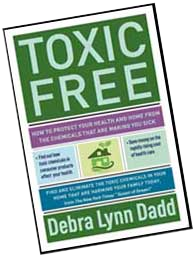 The first is my book Toxic Free. In my opinion, this is the best book I’ve ever written for a beginner. It starts by explaining the basics of the problem and then gives you 50 things you can do, in the order in which you should do them.
The first is my book Toxic Free. In my opinion, this is the best book I’ve ever written for a beginner. It starts by explaining the basics of the problem and then gives you 50 things you can do, in the order in which you should do them.
In this book from 2011, the list was a little different:
First I listed “The Big Five”: cigarette smoke, alcoholic beverages, drugs, household poisons and hazardous waste, toxics you track indoors on your shoes (leave them at the door, especially if you have babies or children playing on the floor). These exposures are so major there’s almost no point in doing anything else if you are still having these exposures (except for toxics tracked indoors on your shoes).
And then I listed
- Indoor Air Pollution: carbon monoxide, plastics
- Cleaning and Laundry Products
- Household Pesticides
- Tap Water
- Beauty and Hygiene Products
- Food
- Textile Products including mattresses and furniture
- Interior Decorating Products
- Home Office
 Toxic Free has basic instructions for making these changes, but you will find a lot more on this website.
Toxic Free has basic instructions for making these changes, but you will find a lot more on this website.
The other reference is a free ebook I made for a summit called The Toxic Free Lifestyle Checklist. This is much more barebones than Toxic Free but it gives you a good overview, in my recommended order.
Supreme Plastic for Sous Vide Cooking
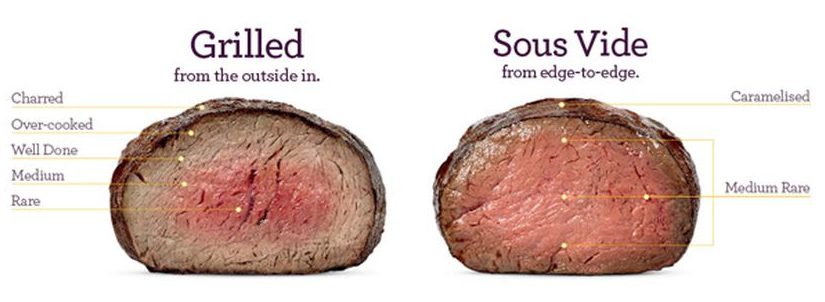
Question from Alexis
Hi Debra,
First of all I just wanted to thank you for sharing all your knowledge to the public regarding the toxins out there. I just love your site and I read it all the time.
My question is I just bought a sous vide supreme and had been using the plastic that came with the sous vide. The company said they had a third party test the plastic to make sure that there is not toxins that leaches out of the plastic while cooking.
I wanted to know what your thought about cooking with sous vide and the plastic. And is it safer if I use the Lekue silicon bag for my sous vide supreme or it’s okay to use the plastic that came with the product.
Thank you very much in advance for your help.
Debra’s Answer
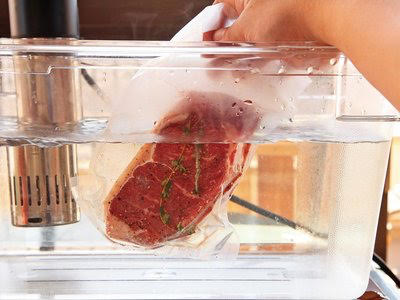 For those of you who are not familiar with sous vide, it is is the process of vacuum-sealing food in a bag, then cooking it to a very precise temperature in a water bath. This technique produces results that are impossible to achieve through any other cooking method.
For those of you who are not familiar with sous vide, it is is the process of vacuum-sealing food in a bag, then cooking it to a very precise temperature in a water bath. This technique produces results that are impossible to achieve through any other cooking method.
First, I wouldn’t eat food that has been put in a plastic bag of any time and then heated.
Second I wouldn’t use a plastic around food where the type of plastic is not disclosed. If they have tests, ask them to show them to you.
Silicone would be better than plastic but it just doesn’t make sense to me from a toxics viewpoint to add manmade materials to the cooking process. We should be eliminating plastics, not adding them.
I don’t like plastic baking bags either.
New Acrylic Bathtub
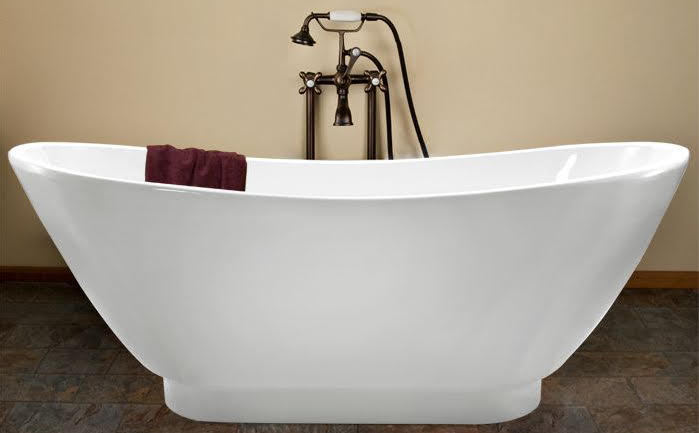
Question from Mike
Hi Debra,
I recently purchased a new acrylic bathtub.
When it was installed the smell was horrific. It filled the whole house and seemed to go into every fabric in the house, the drapes , carpet, clothes bedding towels etc. can anything be done to get rid of the smell other than getting rid of the bathtub.
should an acrylic bathtub smell this bad?
Debra’s Answer
That’s why I don’t recommend acrylic bathtubs.
I don’t know of anything that will stop the smell.
Readers? Anyone have any experience with this?
Chemical free window curtains & cellular blinds

Question from Cathleen
Hi Debra,
I need help ASAP.
I recently took down several sets of curtains in my home, and they all are severely off-gassing for days, no matter how many times I have washed them in vinegar, baking soda, hung them on the wash line, etc.
I have to give up, and try to order new window curtains & blinds.
I have tried Country Curtains in the recent past, and found this same type of chemical off-gassing after washing their 100% cotton Made in USA curtains & had to return them.
Can anyone suggest who I can safely order from? Thanks so much.
Debra’s Answer
Readers? I can recommend websites, but this reader needs to know your personal experience.
I’ve purchased 100% cotton curtains at Target in the past and have had no problem with them after one wash.
I’ve also purchased cotton curtains from IKEA with no problem.

